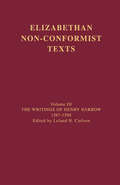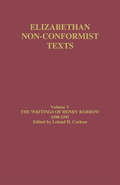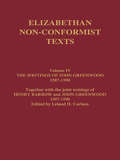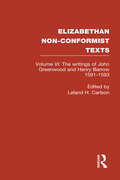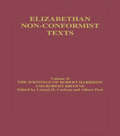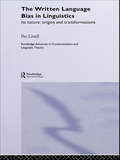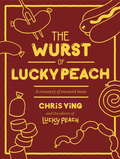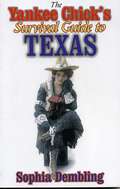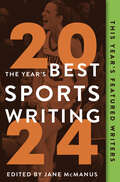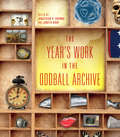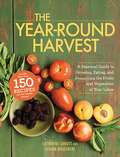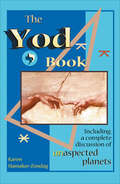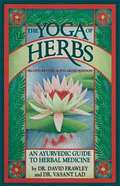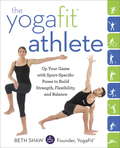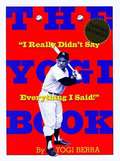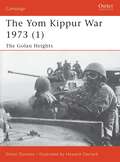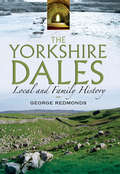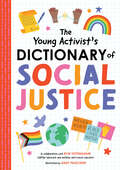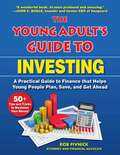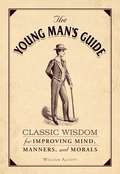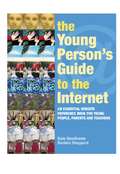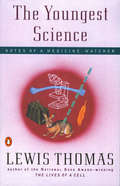- Table View
- List View
The Writings of Henry Barrow, 1587-1590: The Writings Of Henry Barrow 1587 1590 (Routledge Library Editions Ser.)
by Henry BarrowHenry Barrow and John Greenwood are the fathers of Elizabethan Separatism. Unlike Robert Browne, they refused to compromise their beliefs or conform to Anglicanism and as a consequence they died in 1593 - as martyrs for their steadfast adherence to the principles of English Congregationalism. Volumes three and four include c. 40 items derived from manuscripts, surreptitiously printed books and very rare pamphlets and documents which allow evaluation of the teachings of the Separatists, in relation to the activities of the Elizabethan hierarchy, to the Puritans, to the Pilgrims in the Netherlands and the New World and to the Independents and Congregationalists. (16 of the pieces are by Barrow, 6 by Greenwood and 5 by both men, in addition to 13 related Barrowist items in the Appendix).
The Writings of Henry Barrow, 1590-91: The Writings Of Henry Barrow 1590-1591 (Routledge Library Editions Ser.)
by Leland H. CarlsonThis volume contains the great Separatist's solus writings from 1590-1591. It includes texts taken from manuscript sources, and rare tracts that have been reprinted here for the first time.
The Writings of John Greenwood 1587-1590: Together with the Joint Writings of Henry Barrow and John Greenwood 1587-1590 (Elizabethan Non-Conformist Texts #IV)
by John GreenwoodHenry Barrow and John Greenwood are the fathers of Elizabethan Separatism. Unlike Robert Browne, they refused to compromise their beliefs or conform to Anglicanism and as a consequence they died in 1593 - as martyrs for their steadfast adherence to the principles of English Congregationalism. Volumes three and four include c. 40 items derived from manuscripts, surreptitiously printed books and very rare pamphlets and documents which allow evaluation of the teachings of the Separatists, in relation to the activities of the Elizabethan hierarchy, to the Puritans, to the Pilgrims in the Netherlands and the New World and to the Independents and Congregationalists. (16 of the pieces are by Barrow, 6 by Greenwood and 5 by both men, in addition to 13 related Barrowist items in the Appendix).
The Writings of John Greenwood and Henry Barrow 1591-1593 (Routledge Library Editions Ser.)
by John GreenwoodVolumes five and six contain c. 25 pieces of manuscript material, or rare tracts many of which have been available for the first time.
The Writings of Robert Harrison and Robert Browne (Elizabethan Nonconformist Texts)
by Leland Carlson Albert PeelRobert Harrison and Robert Browne were the initiators of the principles of English Separatism and Congregationalism. Unlike the Presbytero-Puritans, these nonconformists sought to establish local churches that were independent of the state. Although they encountered fierce opposition from the clergy, state officials and Anglican bishops, they persisted in their practices. As a result, the ideas of these two men profoundly influenced the Puritan movement both of England and America. In this volume, scarce and little known works, as well as new material derived from manuscripts and tracts are collected into one volume.
The Written Language Bias in Linguistics: Its Nature, Origins and Transformations (Routledge Advances in Communication and Linguistic Theory)
by Per LinellLinguists routinely emphasise the primacy of speech over writing. Yet, most linguists have analysed spoken language, as well as language in general, applying theories and methods that are best suited for written language. Accordingly, there is an extensive 'written language bias' in traditional and present day linguistics and other language sciences. In this book, this point is argued with rich and convincing evidence from virtually all fields of linguistics.
The Wurst of Lucky Peach: A Treasury of Encased Meat
by Chris Ying the editors of Lucky PeachThe best in wurst from around the world, with enough sausage-themed stories and pictures stuffed between these two covers to turn anyone into a forcemeat aficionado.Lucky Peach presents a cookbook as a scrapbook, stuffed with curious local specialties, like cevapi, a caseless sausage that's traveled all the way from the Balkans to underneath the M tracks in Ridgewood, Queens; a look into the great sausage trails of the world, from Bavaria to Texas Hill Country and beyond; and the ins and outs of making your own sausages, including fresh chorizo.From the Hardcover edition.
The Yankee Chick's Survival Guide to Texas
by Sophia DemblingIn Texas "Yankee" is a loose term covering a lot of ground. If you're not a Texan or a southerner, you're a Yankee and therefore, to many Texans, suspect.There are many rites of passage to being a Yankee in Texas: the first time you spot a pickup with a gun rack; the first time you realize that a week is a long time to go without Mexican food; the first time you recognize a change in seasons; your first thunderstorm; your first honky-tonk.Culture Shock in Texas can be intense and is exacerbate by local rules of propriety that tell us to keep out mouths shut. But here in this book we are going to talk all about it with good old Yankee outspokenness. We'll clear the air, share experiences, orient newcomers, and have some good laughs.
The Year's Best Sports Writing 2024
by Edited by Jane McManusA must-read collection featuring the best in sports journalism Editor Jane McManus has curated an essential anthology showcasing incredible feats and diverse perspectives across the world of sports. Selected from a wide range of newspapers, magazines, and digital publications during the previous year, these stories capture enduring moments while celebrating the craft of writing at its most sublime. This extraordinary collection reveals the fascinating stories behind the sports we love, the competitors who push their boundaries, and the cultures they are ultimately embedded in.
The Year's Work in the Oddball Archive (The Year's Work: Studies in Fan Culture and Cultural Theory)
by Grant Farred Timothy Sweet Aaron Jaffe Joseph Campana Charles M. Tung Dennis Allen Theodore Bale Atia Sattar Beth A. McCoy Robin Blyn Seth Morton&“By playing with notions of collecting and cataloging, this anthology offers a range of investigations into detritus and forgotten ephemera.&”—Colin Dickey, coeditor of The Morbid Anatomy Anthology The modern age is no stranger to the cabinet of curiosities, the freak show, or a drawer full of odds and ends. These collections of oddities engagingly work against the rationality and order of the conventional archive found in a university, a corporation, or a governmental holding. In form, methodology, and content, The Year&’s Work in the Oddball Archive offers a counterargument to a more reasoned form of storing and recording the avant-garde (or the post-avant-garde), the perverse, the off, the bent, the absurd, the quirky, the weird, and the queer. To do so, it positions itself within the history of mirabilia launched by curiosity cabinets starting in the mid-fifteenth century and continuing to the present day. These archives (or are they counter-archives?) are located in unexpected places—the doorways of Katrina homes, the cavity of a cow, the remnants of extinct animals, an Internet site—and they offer up &“alternate modes of knowing&” to the traditional archive. &“An unruly―and much-needed―model for how to do the archive differently.&”—Scott Herring, author of The Hoarders: Material Deviance in Modern American Culture &“It was a pleasure to read through this collection, and I suspect some of the essays, if not the entire book, will find itself on the syllabus for my Archive and Ephemera graduate course.&”—Museum Anthropology Review &“A finely wrought collection of curiosities . . . A vital intervention into how we talk about the stuff that surrounds us.&”—Colin Dickey, coeditor of The Morbid Anatomy Anthology
The Year-Round Harvest
by Catherine Abbott Alison WoitunskiDo you . . . . . . love harvesting juicy heirloom tomatoes--but are at a loss for how to extend their shelf life? . . . dig up buckets full of robust potatoes--but don't know how to store them to resist rot? . . . dream about growing vibrant, crisp greens into the colder months--but can't come up with a system that works? If so, this book is for you. Inside, you'll find all you need to grow and store an abundance of fresh food that will leave you wanting more! Complete with variables to consider given your own growing situation, this one-stop guide features illustrations and trusted advice for getting your hands dirty and planting with preservation in mind. In addition, you get 150 recipes--from Roasted Red Pepper Pesto and Dried Tomato Risotto to Lavender Blueberry Jam and Fresh Mint Chutney--that help you make your just-picked, homegrown harvest work for you in the most delicious and satisfying way. With this valuable resource, you can forget limp grocery store offerings and instead enjoy your very own bright, flavorful--and nutritious--produce that's in seasonevery season!
The Year-Round Harvest
by Catherine AbbottDo you . . .. . . love harvesting juicy heirloom tomatoes--but are at a loss for how to extend their shelf life?. . . dig up buckets full of robust potatoes--but don't know how to store them to resist rot?. . . dream about growing vibrant, crisp greens into the colder months--but can't come up with a system that works?If so, this book is for you. Inside, you'll find all you need to grow and store an abundance of fresh food that will leave you wanting more! Complete with variables to consider given your own growing situation, this one-stop guide features illustrations and trusted advice for getting your hands dirty and planting with preservation in mind.In addition, you get 150 recipes--from Roasted Red Pepper Pesto and Dried Tomato Risotto to Lavender Blueberry Jam and Fresh Mint Chutney--that help you make your just-picked, homegrown harvest work for you in the most delicious and satisfying way.With this valuable resource, you can forget limp grocery store offerings and instead enjoy your very own bright, flavorful--and nutritious--produce that's in season every season!
The Year-Round Harvest: A Seasonal Guide to Growing, Eating, and Preserving the Fruits and Vegetables of Your Labor
by Catherine AbbottDo you . . .. . . love harvesting juicy heirloom tomatoes--but are at a loss for how to extend their shelf life?. . . dig up buckets full of robust potatoes--but don't know how to store them to resist rot?. . . dream about growing vibrant, crisp greens into the colder months--but can't come up with a system that works?If so, this book is for you. Inside, you'll find all you need to grow and store an abundance of fresh food that will leave you wanting more! Complete with variables to consider given your own growing situation, this one-stop guide features illustrations and trusted advice for getting your hands dirty and planting with preservation in mind.In addition, you get 150 recipes--from Roasted Red Pepper Pesto and Dried Tomato Risotto to Lavender Blueberry Jam and Fresh Mint Chutney--that help you make your just-picked, homegrown harvest work for you in the most delicious and satisfying way.With this valuable resource, you can forget limp grocery store offerings and instead enjoy your very own bright, flavorful--and nutritious--produce that's in season every season!
The Yod Book: Including A Complete Discussion Of Unaspected Planets
by Karen Hamaker-ZondagAn explanation of atypical horoscope configurations, with analyses of celebrity birth charts to see how these astrological patterns play out in real life.A yod is formed when two planets that are sextile also form an inconjunct to another planet. These planets are in different signs and modes and are deeply significant, for they usually symbolize patterns in families that have lasted for generations. This is what Hamaker-Zondag discovered when she started to research the inconjunct aspect as it related to a yod. Also included in this book is a complete discussion of how the energies of unaspected planets, and planets in duet (that only aspect each other) are expressed in a person’s birth chart. Hamaker-Zondag analyzes the background and places it in a broader perspective, including how she works with elements, modes, orbs, and other astrological factors when interpreting this aspect. All in all, this is one of the most exciting books on aspect interpretation published in recent years!Included are great case histories: you have a chance to examine the Monica Lewinsky, Linda Tripp, Kenneth Starr, Bill Clinton scenario. And Princess Diana, Prince Charles, and Prince William are not without these family patterns. She uses the examples of Gandhi, Vaclav Havel, Khomeini, Solzhenitsyn, Willy Brandt, C. G. Jung, Jim Jones, and others. To help you work with your own clients, Hamaker-Zondag brings in the charts of her personal clients and explains them in depth.When you’ve read this book, you’ll want to check out the charts of everyone you know!
The Yoga of Herbs: An Ayurvedic Guide to Herbal Medicine (Second Revised & Enlarged Edition)
by David Frawley Vasant LadFor the first time, here is a detailed explanation and classification of herbs, using the ancient system of Ayurveda. More than 270 herbs are listed, with 108 herbs explained in detail. Included are many of the most commonly used western herbs with a profound Ayurvedic perspective. Important Chinese and special Ayurvedic herbs are introduced. Beautiful diagrams and charts, as well as detailed glossaries, appendices and index are included.
The YogaFit Athlete: Up Your Game with Sport-Specific Poses to Build Strength, Flexibility, and Balance
by Beth ShawBring the strength and breathing power of yoga to the sports you love--and seriously up your game!Yoga routines designed specifically for swimming, running, cycling, golf, tennis, baseball, football, volleyball, basketball, skiing, snowboarding, weight lifting, kickboxing, boxing, CrossFit, and more! "Your body can either help you achieve your goals or get in the way of you living your best life. By practicing yoga and meditation, you can make your body work with you, not against you."--Beth Shaw Whether you're a professional athlete, a weekend warrior, or a pick-up game enthusiast, yoga can dramatically affect your athletic performance and improve your alignment, balance, core stability, strength, flexibility, agility, endurance, lung capacity, and mobility. In this motivating and practical guide, celebrated fitness expert Beth Shaw provides short, sport-specific yoga routines designed to help counter tight muscles, overuse injuries, and musculature imbalances. By adding a quick yoga routine to any workout, you will increase your overall strength and health, and achieve your personal best. Inside you'll find * fully illustrated, sport-specific yoga routines that engage the core, enhance your play, and reduce the risk of injury * essential warm-up and cool-down movements to complement any athletic endeavor * simple breathing exercises to steady your breath and calm your nerves during competition * meditation techniques to help clear your mind and bring laser focus to your goals * guided imagery and visualization exercises to improve performance * strategies for coaching yourself and othersFrom the Trade Paperback edition.
The Yogi Book: I Really Didn't Say Everything I Said!
by Yogi Berra"90% of the game is half mental." YOGI BERRA'S gift for saying the smartest things in the funniest ways has made him America's beloved off-the-cuff philosopher. Now, finally, all of his famously quotable quotes have been Gathered together by the author himself. From "It ain't over 'til it's over" to "You can observe a lot by watching" to "You can't think and hit at the same time!," THE YOGI BOOK is the definitive collection of Yogi-isms. YOGI BERRA anchored the greatest dynasty in baseball history. He played on ten world championship teams, won the American League MVP award three times, and was inducted into the Baseball Hall of Fame in 1972. He is equally renowned out of uniform for his one-of-a-kind observations.
The Yom Kippur War 1973
by Howard Gerrard Simon DunstanOsprey's first title in the study of the Yom Kippur War (1973). At 1345hrs on 6 October 1973, Israeli spotters in the observation post atop Mount Hermon saw Syrian gunners below them removing the camouflage nets from their guns. Ten minutes later shells began to rain down on Israeli positions all along the Golan Heights - The Yom Kippur War had begun. The shock Syrian attack caught the Israelis by surprise and by the afternoon of 7 October a Syrian brigade was less than 10km from the Sea of Galilee. Simon Dunstan describes in detail how amid desperate and bitter fighting the Israeli forces managed to turn the tide on the Golan Heights.
The Yorkshire Dales: Local and Family History
by George RedmondsThe landscape and people are the two most distinctive qualities of the Yorkshire Dales, and this book employs new sources and methods to help the reader see both in a different light. In earlier centuries, religious and social factors influenced the first names that were given to children. Distinctive surnames were inherited, and their expansion or decline can throw light on local communities, on migration and population growth. Place-names emerged from regional and customary practices that illuminate topography, husbandry, mining, communications and much more. Thebook also uses material from Quarter Sessions, title deeds, wills and other documents to investigate a wide range of topics that touch on the lives of individuals and families, from religious dissent to sheep-stealing and vagrancy. There is emphasis too on the poor, showing the impact on families and communities of bastardy, fire, flood, violence and other disasters. A book written for anyone interested in the local and family history of the Yorkshire Dales.
The Young Activist's Dictionary of Social Justice
by duopress labsA Is for Ally, Advocate, Anti-Racist, Ancestors, and Assembly Using simple explanations and appealing illustrations in a familiar A-to-Z format, The Young Activist's Dictionary of Social Justice will teach kids the new vocabulary of change. Vetted by an anti-bias, anti-racism educator, this essential new resource is packed with easily understandable definitions of timely concepts. Each beautifully designed spread represents a letter and provides concise, age-appropriate definitions for 10 or more terms, with subject matter spanning issues like racial justice, climate change, gender equality, LGBTQ+ rights, income disparity, voter engagement, and immigration. In addition to information, the pages are also full of inspiration: Bite-sized bios accompany key terms, illuminating the stories of justice advocates who got involved with a cause at a young age. Infographics and sidebars bring complementary concepts to life. And with the rich resource section in the back, kids can read more about how to take action on the cause that&’s meaningful to them. Read on, and let&’s work together for a more equal world for all. Featuring: Audrey Faye Hendricks (arrest) Claudette Colvin (boycott) Iqbal Masih (child labor) Greta Thunberg (climate justice) Malala Yousafzai (education) Mari Copeny (environmental racism) Parkland Survivors (gun control) Ruby Bridges (integration) Frederick Douglass (literacy) John Lewis (nonviolence) Clara Lemlich (organize) Marley Dias (representation) Dolores Huerta (strike) Jazz Jennings (transition) Autumn Peltier (water protector)
The Young Adult's Guide to Investing: A Practical Guide to Finance that Helps Young People Plan, Save, and Get Ahead
by Rob PivnickLearn all about saving and compounding, budgeting, debt, negotiations, and more in this ultimate guide to finances and money! It&’s never too early to start saving those dollars! This extensive guide is perfect for teenagers, millennials, and even adults who want to learn more about how to handle money, banking, and investing in their future accounts. No more insecurity about the low funds in those bank accounts. Written by a financial advocate, this comprehensive guide is easy to understand and filled with fun graphics, tempting even the most uninterested teen to read and follow along. Encouraging financial independence and good saving habits, this book will teach you concepts and skills such as: Setting financial goalsRisk v. rewardDiversificationFinancial advisingMinimizing costs and expensesAnd more! Statistically, Americans as a whole are financially illiterate; 21 percent of adults think that winning the lottery is their best chance of retirement! It is not too late to start learning how to best spend, save, and invest your money. With plenty of fun facts and basic lessons and takeaways, The Young Adult&’s Guide to Investing is the perfect way to start planning your best financial future!
The Young Man's Guide
by William AlcottTimeless wisdom for the modern man! In the nineteenth century, William Alcott's The Young Man's Guide paved the way toward personal and financial success for thousands of men. Now, in this unique rendition of his classic work, you, too, can use his wisdom to unlock your greatest potential and live a happy and prosperous life. From refining your appearance and handling social interactions to managing your finances and business matters, each of the aphorisms and quotes in this book reveals simple yet revelatory techniques that will empower you to redefine your future and fill it with love, joy, and abundance. With William Alcott's guidance, you will strengthen your character, harness purposeful thoughts, and create the life you've always wanted.
The Young Man's Guide: Classic Wisdom for Improving Mind, Manners, and Morals
by William AlcottTimeless wisdom for the modern man!In the nineteenth century, William Alcott'sThe Young Man's Guide paved the way toward personal and financial success for thousands of men. Now, in this unique rendition of his classic work, you, too, can use his wisdom to unlock your greatest potential and live a happy and prosperous life. From refining your appearance and handling social interactions to managing your finances and business matters, each of the aphorisms and quotes in this book reveals simple yet revelatory techniques that will empower you to redefine your future and fill it with love, joy, and abundance.With William Alcott's guidance, you will strengthen your character, harness purposeful thoughts, and create the life you've always wanted.
The Young Person's Guide to the Internet: The Essential Website Reference Book for Young People, Parents and Teachers
by Kate Hawthorne Daniela SheppardIn this easy-to-use reference, over 1600 websites have been carefully researched and selected with educational and recreational needs in mind. Sorted into thirty categories including all National Curriculum subjects, the book provides brief descriptions of each website and the resources you can expect to find there. Some of the wide-ranging categories include art, attractions, careers and students, environment, film, TV and radio, reference and revision. The format is unique and simple, making this a perfect resource for young people, parents and teachers and an excellent support tool for schools and libraries.
The Youngest Science: Notes of a Medicine-Watcher
by Lewis ThomasFrom the 1920s when he watched his father, a general practitioner who made housecalls and wrote his prescriptions in Latin, to his days in medical school and beyond, Lewis Thomas saw medicine evolve from an art into a sophisticated science. The Youngest Science is Dr. Thomas's account of his life in the medical profession and an inquiry into what medicine is all about--the youngest science, but one rich in possibility and promise.He chronicles his training in Boston and New York, his war career in the South Pacific, his most impassioned research projects, his work as an administrator in hospitals and medical schools, and even his experiences as a patient. Along the way, Thomas explores the complex relationships between research and practice, between words and meanings, between human error and human accomplishment, More than a magnificent autobiography, The Youngest Science is also a celebration and a warning--about the nature of medicine and about the future life of our planet.
